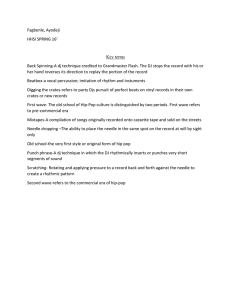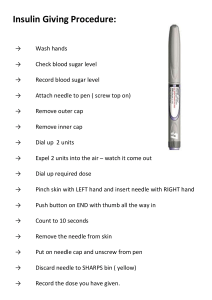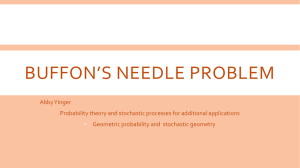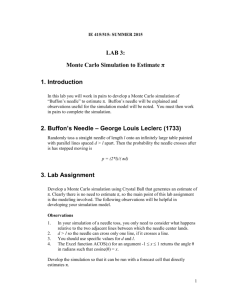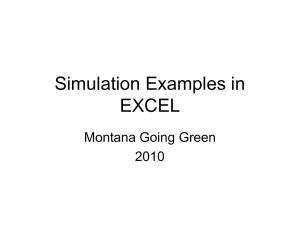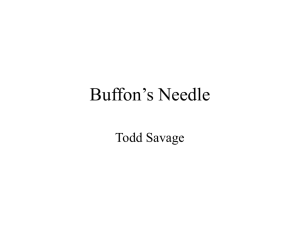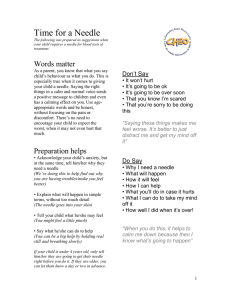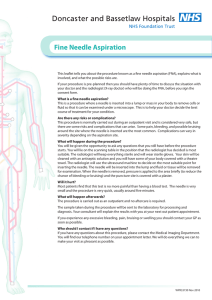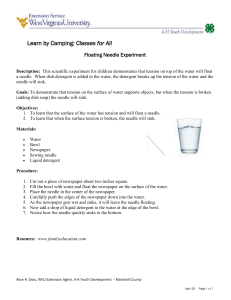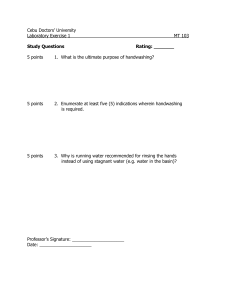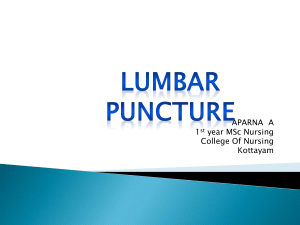LECTURE 10 Lecture outline • Readings: Section 3.6 • More on continuous r.v.s
advertisement
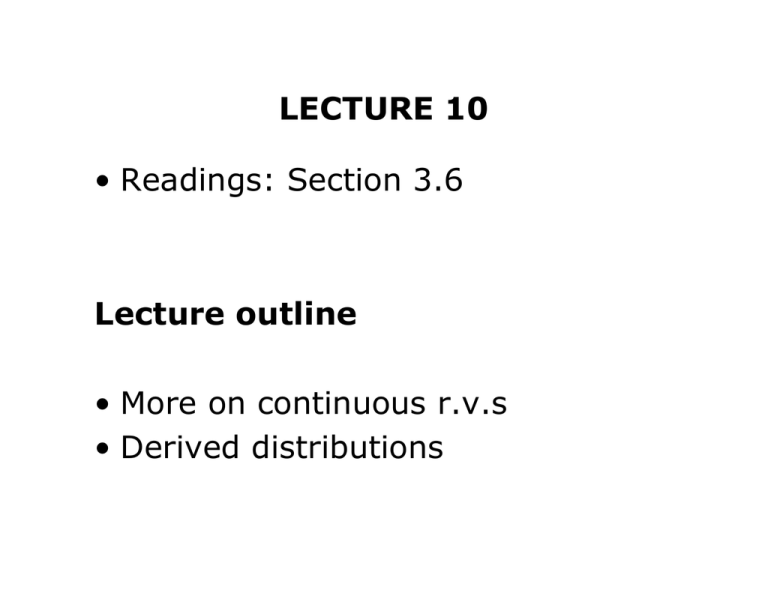
LECTURE 10 • Readings: Section 3.6 Lecture outline • More on continuous r.v.s • Derived distributions Review Conditioning “slices” the joint PDF • Recall the stick-breaking example: • Pictorially: Buffon’s Needle (1) • Parallel lines at distance Needle of length (assume ) • Find P(needle intersects one of the lines). • Midpoint-nearest line distance: • Needle-lines acute angle: Buffon’s Needle (2) • Model: uniform and independent. • When does the needle intersect a line? Buffon’s Needle (3) What is a derived distribution? • It is a PMF or PDF of a function of random variables with known probability law. • Example: • Let: . Note: • Obtaining the PDF for involves deriving a distribution. is a r.v. Why do we derive distributions? • Sometimes we don’t need to. Example: – Computing expected values. • But often they’re useful. Examples: – Maximum of several r.v.s. (delay models) – Minimum of several r.v.s (failure models). – Sum of several r.v.s. (multiple arrivals) How to find them: Discrete Case • Consider: - a single discrete r.v.: - and a function: • Obtain probability mass for each possible value of : How to find them: Continuous Case • Consider: - a single continuous r.v.: - and a function: • Two step procedure: 1. Get CDF of : 2. Differentiate to get: • Why go to the CDF? Example 1 • : uniform on • Find PDF of • Solution: 1. Get the CDF: 2. Differentiate: Example 2 • Joan is driving from Boston to New York. Her speed is uniformly distributed between 30 and 60 mph. What is the distribution of the duration of the trip? • PDF of the velocity • Let: • Find . : The PDF of . • Use this to check that if is normal, then is also normal.
